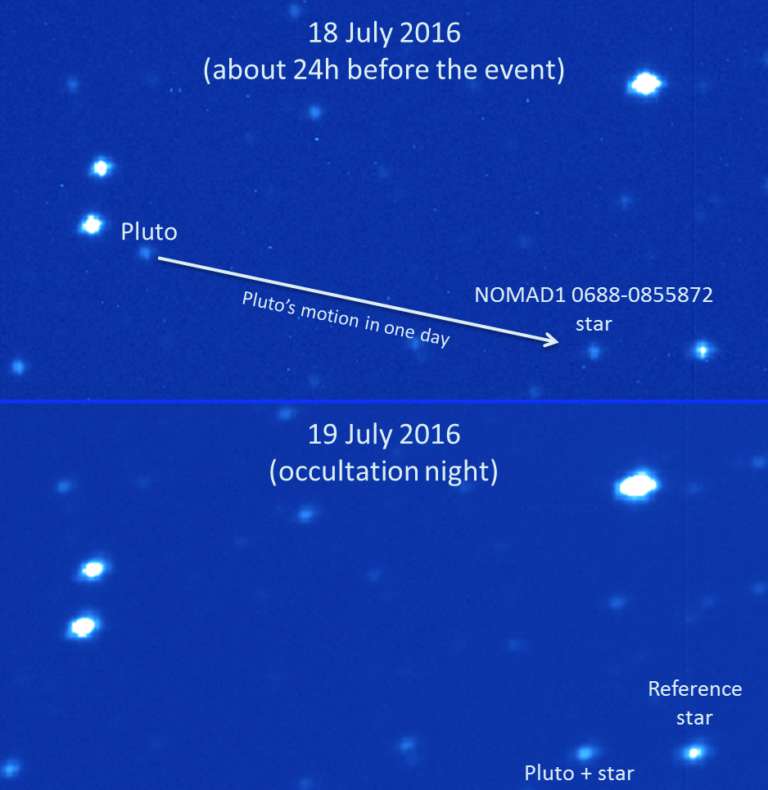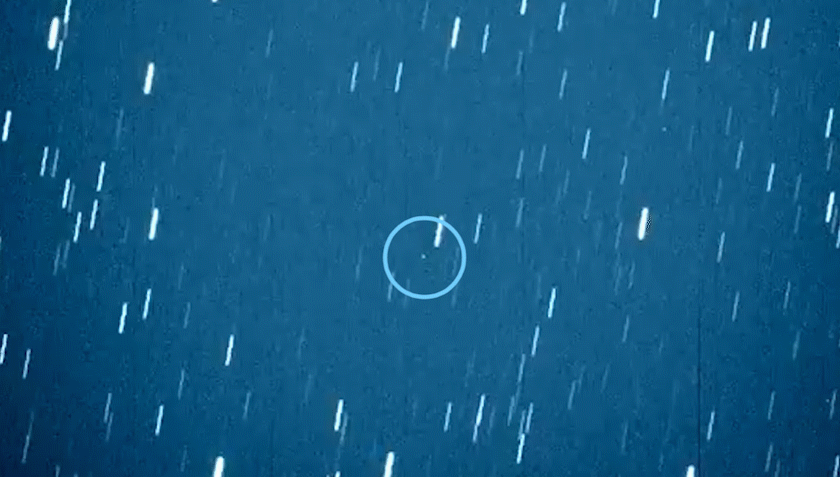Jason Davis • Apr 17, 2017
Our asteroid hunters are trying to save the world. Here’s what they’ve been up to
In mid-February, The Planetary Society launched its latest campaign to help astronomers observe potentially dangerous asteroids.
After a near-Earth asteroid is found, its trajectory must be refined to determine whether it might one day hit Earth. Doing this can require multiple follow-up observations from all over the world—more than the professionals can handle on their own. These observations also reveal characteristics like an asteroid’s spin rate, and determine whether what at first appeared to be one asteroid is actually a binary pair.
That's where our NEO Shoemaker grant program comes in. Since 1997, we've been helping fund amateur astronomers who observe near-Earth asteroids. We collect donor funding and ask the amateur astronomy community for proposals, and then award grants to a handful of winners. Most of the funding is used to buy telescope components like sensitive CCD cameras.
Shoemaker winners are required to send us status reports for two years. But we also encourage all of our past award recipients to stay in touch.
Recently, we asked for a round of new updates. Here are some reports from our asteroid observers, who are quite literally trying to save the world. Many also threw in some other astronomical goodies, which we've included below.
Robert Holmes
Astronomical Research Institute (ARI), Northern Illinois
2015 grant: $5,500 to purchase more sensitive CCD camera for 1.3-meter telescope
2013 grant: $6,662 to purchase CCD camera for re-commissioned 0.76 meter telescope
2010 grant: $1,405 to purchase blue, visible, red, infrared and clear telescope filters
2009 grant: $7,000 to purchase CCD camera to use on 0.6-meter, 0.8-meter and 1.2-meter telescopes
2007 grant: $8,000 to purchase CCD camera for 0.81-meter telescope
Holmes is a five-time Shoemaker grant winner, and his observatory is a world-leader in NEO observations. The facility recently began focusing the majority of its efforts on under-observed asteroids fainter than the 22nd magnitude (in other words, very faint).
The strategy has paid off: In 2016, the observatory made more NEO observations than any other facility on Earth in the span of one year—ever. Out of 17,113 total measures, 1,093 were of 22nd magnitude asteroids, and 177 were of 23rd magnitude asteroids.
Donald Pray
Sugarloaf Mountain Observatory, Massachusetts
2015 grant: $6,690 to replace failing CCD camera
2013 grant: $8,070 for the mirror, structure, and focuser of a new 0.5-meter telescope
2007 grant: $7,500 to upgrade and reactivate 0.35-meter telescope
Pray, a three-time grant recipient, purchased a new CCD camera using his 2015 funding. He has since been credited with the discovery of five binary asteroids. He contributed photometric data for three others, sending out CBETs (Central Bureau for Electronic Telegrams—a sort-of email alert list for astronomers) with each discovery.
Luca Buzzi
G. V. Schiaparelli observatory, northern Italy
2015 grant: $9,995 to install a CCD camera on a new 0.84-meter telescope
After receiving his grant funding, Buzzi purchased his new CCD camera. Four months later, the primary mirror for his new 0.84-meter telescope finally arrived, and his team prepared the observatory for operations. Buzzi sent us this first light photo of M51, the Whirlpool Galaxy:
Unfortunately, the mirror was found to be defective, and had to be sent back for reshaping. In the meantime, Buzzi's team is upgrading their dome for remote operations, and expect to be up and running this spring.
Julian Oey
Blue Mountains Observatory, New South Wales, Australia
2015 grant: $15,000 to purchase CCD for 0.6-meter telescope
In the second half of 2016, Oey obtained 70 individual light curves for different asteroids, most of which targeted suspected binary asteroids. His observations also collected the rotational periods of 30 new binary asteroids.
Center for Solar System Studies (CS3), Landers, California
Daniel Coley, 2015 grant: $8,065 to replace failing CCD camera
Robert Stephens, 2013 grant: $8,065 to purchase CCD camera for 0.4-meter telescope
Three Shoemaker NEO grant winners have come from CS3 over the years. In addition to Coley and Stephens, Brian Warner won in 2007, while at the Palmer Divide Observatory.
CS3 was operational for about 300 nights in 2016, collectively making more than 2,000 observations that resulted in the determination of 373 asteroid rotational periods.
The group's work on rotational periods helps support other asteroid teams at Arecibo Observatory and the Goldstone Deep Space Communications Complex.
Albino Carbognani
Astronomical Observatory of the Autonomous Region of the Aosta Valley (OAVdA), Italy
2013 grant: $9,120 to upgrade 0.81-meter telescope
Carbognani's restored 0.81-meter telescope continues to yield asteroid observations. In 2015 and 2016, the OAVdA made follow-up observations of 33 NEOs, captured 25 asteroidal light curves, and characterized three new binary asteroids.
The observatory also helped observe a Pluto stellar occultation in mid-2016, during which Pluto passed in front on a distant star:

Gary Hug
Sandlot Observatory, Kansas
2013 grant: $2,390 for computers and related equipment
2009 grant: $8,200 to purchase CCD camera for new 0.6-meter telescope
Hug set a personal goal of making 10,000 NEO observations from his backyard observatory, and in August 2016, he surpassed that number. While making asteroid observations, Hug also happened to see a star brighten by 2 magnitudes in just a few minutes, before fading again. He has since looked for another outburst, with no luck, and sent this chart of his initial observation on December 2, 2016:
Herman Mikuž
Črni Vrh Observatory, Slovenia
2010 grant: $8,000 to help purchase deep-cooled CCD camera for 0.6-meter telescope
2000 grant: $7,300 to help complete construction of new 60cm telescope
In 2015 and 2016, Mikuž and his colleagues made follow-up observations of 30 NEOs and comets, including one that buzzed Earth by a mere 100,000 kilometers—between a third and a quarter of the distance between the Earth and Moon.
Here's a video of that close encounter:
Asteroid WEBF312 flyby, 2015 (Video) On the night of March 11 and morning of March 12, 2015, an asteroid named WEBF312 flew past the Earth at a distance of about 100,000 kilometers—just two-and-a-half times the distance between the Earth and Moon. These images were captured by Planetary Society NEO Shoemaker Grant winner Herman Mikuž.Video: Herman Mikuž / Črni Vrh Observatory, Slovenia
Here's what that looks like in close-up GIF form:

The team also discovered three near-Earth objects, a main-belt asteroid and a trans-Neptunian object. And as a by-product of their NEO work, they found 10 supernovae.
Ye Quan-Zhi
Lulin Sky Survey, China
2007 grant: $2,000 to purchase laptop and software for 16-inch telescope
When Ye received a Shoemaker grant in 2007, he was 18 years old in China, and used the funds to help him run an automated telescope at a Taiwanese observing site. Now, 10 years later, he has completed his Ph.D. and recently landed a post-doc position at Caltech. His appointment is working on NEO detection at the Zwicky Transient Facility, which is located at the Palomar Observatory near San Diego, California.
Anthony Wesley
Murrumbateman, Australia
2010 grant: $2,500 for continued operations of real-time planetary imaging
Wesley is perhaps best-known for observing an impact scar on Jupiter on July 19, 2009, and another Jupiter impact on June 3, 2010. His original grant helped fund his real-time planetary imaging program, using a 0.37-meter telescope. He is the only Shoemaker award winner given funding for planetary observing.
In July 2016, he observed Jupiter during the Juno spacecraft's first close flyby. He continues to observe the solar system, and sent us this beautiful picture of Mars:
Let’s Go Beyond The Horizon
Every success in space exploration is the result of the community of space enthusiasts, like you, who believe it is important. You can help usher in the next great era of space exploration with your gift today.
Donate Today

 Explore Worlds
Explore Worlds Find Life
Find Life Defend Earth
Defend Earth




